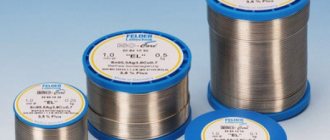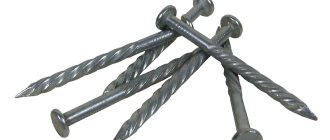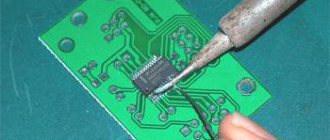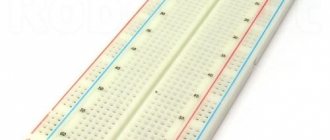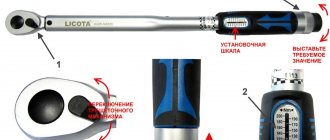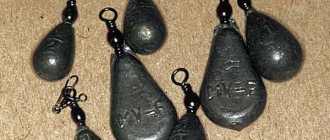How to make liquid rosin with your own hands
Rosin contains from 60 to 90% resin acid (abietic acid), from 1 to 12% fatty acids and up to 20% neutral substances.
Rosin does not dissolve in plain water, but it dissolves well in alcohol, benzene or acetone; dissolution is slightly worse in kerosene. At temperatures from 40 to 75° Celsius it softens well, and at 100-140° the melting process begins, boiling occurs at 250°. When organic and mineral substances are added to the composition, a special rosin soap is obtained, and when dissolved with polyhydric alcohol, a rosin ester is obtained. Rosin found its main use in amateur radio when soldering radio components. Pine rosin is an excellent and cheap soldering flux. Despite the modern abundance of chemical fluxes, it still continues to be actively used in electronics. Rosin melted by a soldering iron tip easily removes the oxide layer from the surface of radio elements undergoing the soldering process. In addition, rosin reduces the surface tension of the solder and helps it spread evenly over the entire plane.
Before the soldering process, the tip of the soldering iron is dipped in rosin, then it is used to touch the solder, after which it is touched to the place where the parts are soldered. The main advantage of rosin, which has retained its popularity as a soldering flux, is its acid neutrality, since raw materials of natural origin are used in its production. Unlike other acid-based fluxes, the soldering area does not corrode and there is no current leakage through it. As a soldering flux, rosin is used both in pure form and in combination with various substances. The simplest flux made from it is a solution in pure medical alcohol in a ratio of 4 to 6.
The technology for soldering metal parts using rosin is very simple and accessible to beginner radio amateurs. The heated tip of the soldering iron is dipped into frozen rosin, after which it takes a small piece of solder and applies it to the surface of the part to be soldered. The same algorithm is repeated with another part, which is connected to the first. Then both metal surfaces are superimposed on each other and a heated soldering iron is brought to them, whose tip is again covered with rosin and solder. As a result, the molten solder forms a special monolithic mass, which, when hardened, will well connect the surfaces into one whole.
And so we take an ordinary crystal of frozen amateur radio rosin.
Then we grind a piece of rosin into dust, for this we take some non-porous fabric or paper, place a crystal in it, and beat it with a hammer until a homogeneous mass is obtained. This is necessary for good dissolution of rosin in ethyl alcohol.
Next, pour this rosin dust into a bottle and fill it with pure ethyl alcohol in a ratio of 1 to 1.5 (rosin: alcohol).
We close the bottle with a lid and place the glass bottle in a bowl of warm water. When the solution heats up, you need to shake the mixture well so that it turns into a homogeneous mass. That's all, now the flux is ready, pump it into medical syringes and use it comfortably.
How to dissolve rosin for soldering?
Flux is a substance, both organic and inorganic, that ensures the removal of oxides from soldered conductors, reduces the force of surface tension, and also improves the uniformity of spreading of molten solder. In addition to its main purpose, flux can protect contacts from environmental influences, but it should be noted that not all types of fluxes have this property.
Depending on the need, flux can be in the form of liquid, powder or paste.
Solder pastes are also produced that contain solder particles along with flux, and all modern solders are a tube of solder inside which there is a flux filler.
According to the temperature regime and activity interval, fluxes can be divided into low-temperature (up to 450 degrees) and high-temperature (more than 450 degrees). In addition, the flux can be aqueous or anhydrous.
Based on their chemical properties, all fluxes can be divided into acidic (active) and acid-free. In addition, there are also activated and with anti-corrosion protection.
Active fluxes
mainly consist of hydrochloric acid and chloride or fluoride metals. The pharmaceutical drug acetylsalicylic acid (aspirin) has long been used as an active flux. These fluxes very intensively dissolve the oxidized layer on the surface of the metal, and the soldering immediately becomes high-quality and durable, but the flux residue after soldering causes intense corrosion of the joint and the base metal in the future. Therefore, it is recommended to wash off all flux residues that remain at the soldering site.
When soldering radio-electronic elements, the use of active fluxes is not permissible, since over time their residues still corrode the place where thin radio elements are soldered.
Acid-free fluxes
, mainly these are rosin and fluxes prepared on its basis with the addition of alcohol, turpentine or glycerin. During the soldering process, rosin cleans the surface of oxides and also protects it from oxidation. At a temperature of 150 degrees, rosin dissolves the oxides of lead, tin and copper, cleaning their surface during the soldering process and the soldered joint becomes shiny and beautiful. But most importantly, unlike active fluxes, rosin fluxes do not cause corrosion and corrosion of metal. Copper, bronze and brass are soldered using rosin fluxes.
Activated fluxes
, mainly, in addition, they consist of rosin to which a small amount of hydrochloric acid or phosphate aniline, salicylic acid or diethylamine hydrochloride is added.
These fluxes are used for soldering the bulk of metals and alloys (iron, steel, high-quality stainless steel, copper, bronze, zinc, nichrome, nickel, silver), even oxidized elements from copper alloys in the absence of preparatory cleaning.
Activated fluxes are considered to be LTI fluxes, which contain ethyl alcohol (66 - 73%), rosin (20 - 25%), aniline hydrochloride (3 - 7%), triethanolamine (1 - 2%). LTI flux gives excellent results when using tin solders POS-5 and POS-10, providing increased strength of the soldered joint.
Anti-corrosion fluxes
used for soldering copper and copper alloys, constantan, silver, platinum and its alloys. They contain phosphoric acid with the addition of various organic compounds and solvents. Some anti-corrosion fluxes contain organic acids. Residues of these fluxes do not cause corrosion.
VTS flux, for example, consists of 63% of those. Vaseline, 6.3% triethanolamine, 6.3% salicylic acid and ethyl alcohol. Remains of flux are removed by wiping the part with alcohol or acetone.
Protective fluxes protect the previously cleaned metal surface from oxidation and do not have a chemical effect on the alloy. This group includes inactive materials: wax, petroleum jelly, olive oil, sweet powder, etc.
Methods of obtaining
Varieties of rosin come from the method of production, composition and physical state. The main differences in production methods are the substances from which the composition is extracted.
Obtaining rosin
The material is divided into three categories: gum, tallow and extraction resin for soldering.
- Gum rosin is produced by processing the resin of coniferous trees; the main plant is pine, due to its availability and prevalence. The main distinguishing point can be seen in the absence of fatty acids, the use of which is not available in some works.
- The extraction base is produced by extracting gasoline and the main component - a share of pine tree wood. It is distinguished by a lower temperature softening threshold and dark color. The melting point starts from 52 degrees, the acid number varies from 145 to 175. The presence of fatty acids in the composition is 10%; if the substance is chemically clarified, it will be more similar to a gum substance.
- In sulfate-cellulose production, a by-product is released - tallow rosin. It is divided into several grades according to quality and purpose, the method of production from sulfate soap. More expensive varieties are not inferior in properties to the natural product.
A detailed acquaintance with the basis of the craft leads to the conclusion that it belongs to the category of fluxes. In cases where the required item is not at hand, you can use a welding drill.
How to make liquid rosin
Rosin is a natural material that is obtained from the resin of coniferous trees by evaporating turpentine. After processing, a solid translucent resin is obtained, which is used as a soldering flux. Rosin is used not only in its pure form, but also in combination with various chemical additives. Rosin is mainly used in amateur radio as a cheap and high-quality flux. For soldering radio components and tinning printed circuit boards, it is very convenient to use an alcohol solution of rosin. Liquid rosin easily penetrates into all hard-to-reach places, both when soldering SMD components and conventional radio components, does not leave dirty marks on the board and, if necessary, is easily washed off with acetone or alcohol. Rosin easily dissolves the film of oxides formed on the surface of radio elements during the soldering process, and also reduces the surface tension of the solder melted by the soldering iron tip, allowing it to spread evenly over the entire surface of the soldering area.
In radio stores, the shelves are simply full of various expensive and cheap, chemical, acidic and natural fluxes based on pine rosin. There's a lot of choice, I don't want to take it. But as a real radio amateur, for the sake of experiment, I wanted to prepare an alcohol solution of rosin with my own hands. As my grandfather, an avid radio amateur, did.
Enough words, now I’ll start my experiment, I just can’t wait to see what happens in the end...
As always, I prepared very carefully for the experiment: I took two 20 grams. jars of pine rosin, 100 ml. pure 96° alcohol and an empty plastic bottle for preparing liquid rosin.
You definitely need to take new and clean rosin; dirty rosin, burnt by a soldering iron tip, will not work, because it will contain a lot of dirt and all sorts of impurities. Rosin can be dissolved in anything, in acetone, in all sorts of strange solvents, even kerosene. But the safest and non-toxic solvent for rosin, as you may have guessed, is 70° medical alcohol; you can also use 96°, it will dissolve even faster.
The rosin must be thoroughly crushed, I do this with such powerful pliers, right in the jar. The compression of the rosin crumbles into small pieces, which is very convenient; there is no need to do anything shamanic with glasses, mortars, crushers and other crap.
Now I pour it into a plastic bottle. There are exactly two jars of rosin here.
I fill this whole thing with alcohol, one to one. I have two jars, which is 40 grams of rosin, which means you need to pour in at least 40 milliliters of alcohol, maybe a little more. As they say, by eye. If all the rosin is not dissolved, I will add more. For such an interesting experiment, I donated a bottle of pure alcohol. What won't you do for the sake of science? Now I’ll mix this whole thing thoroughly. After about an hour, all the rosin should dissolve.
After an hour, the rosin had completely dissolved, resulting in a homogeneous, transparent honey-colored rosin-alcohol solution with a pleasant smell of pine rosin.
And now, as always the most interesting thing, I’ll see how liquid rosin will solder.
It turned out not bad, even better than store-bought flux (LTI-120, KE, FKEt, FKSp and so on), one might say it’s a little thicker.
Liquid rosin works, the experiment was a success! It solders perfectly and has such a pleasant light rosin smell. I'm just delighted!
Friends, I wish you good luck and good mood! See you in new articles!
I recommend watching a video on how to make liquid rosin with your own hands
Alcohol-rosin soldering flux
For soldering, not only pure rosin, but also its solutions are used as a flux. In particular, many people know alcohol-rosin flux. It is neutral, so residues do not corrode metals and do not need to be washed off.
The ingredients for the alcohol-rosin solution have been known for tens and even hundreds of years. Raw materials for their production are always in abundance, so this flux is inexpensive.
Positive properties
Rosin was obtained from cuts of coniferous trees.
Volatile components were evaporated. The remainder was three-quarters of the original mass of resin. Rosin for soldering was used only after such preliminary preparation. Everything would be great, but when working, you need to dip a hot soldering iron into the resin flux. The main tool is then covered with chemical mud, so that the working area is not very visible.
Over time, it became clear that liquid rosin as a flux is much more convenient to use. Due to the presence of natural resin substances of a soft acidic nature, it:
- perfectly removes the oxide layer on parts;
- spreads well;
- occupies the entire adhesion site.
Features of use
The main difference between the liquid version of the substance and solid rosin is that the former is able to spread in an even layer over the work area without the use of high temperature effects.
Before performing the soldering procedure, any product must be cleaned of traces of corrosion, grease, etc. For this you can use any available solvent. It is important that after cleaning the work area, you need to wait for it to dry completely and only then proceed directly to soldering.
After this, liquid rosin is applied to the work area so that the work area is completely covered with an even layer of the substance. In this case, under no circumstances should you perform any additional operations: heating, mixing with anything, etc. After completing all the above-described manipulations, you can proceed directly to soldering.
It is worth noting that you need to use a sufficient amount of flux so that it can protect the working surface from the appearance of an oxide film.
There is also no guarantee that the soldering procedure will be completely completed the first time. If this fails, then you should increase the amount of flux used and repeat the entire procedure from the beginning.
It is important to perform all movements smoothly and carefully. In the event that flux gets on a non-working surface. It will be very difficult to remove it from there later. Ideally, the soldering procedure should be tediously completed in such a way that there is no need to clean up the work area after completion.
How to make liquid rosin
Recently, a radio amateur has been given a wide selection of fluxes to choose from, all possible chemical active and super active fluxes for soldering, which are well worth the money. They all have their pros and cons, and every solderer likes his own. Opinions may vary, but I express my opinion.
In my opinion, rosin is one of the best fluxes; I have been using rosin for 3 years of my practice. And there are a number of reasons why rosin is the best:
— Firstly, this is an environmentally friendly product. For those in the tank, rosin is pine resin, which means it is natural. - Secondly, rosin is easily washed off with alcohol, which means removing excess rosin from the printed circuit board will not be difficult, which means there will be no interference between the tracks... - Thirdly, rosin is easy to get. Where to buy rosin? Rosin can be bought in almost any hardware store, in music stores (my grandfather rosinized violin bows) and at radio markets - Fourthly, this is probably individuality, I adore the smell of rosin (it looks like a drug addict :))
It is especially good if the rosin is liquid. But liquid rosin also costs well, so liquid rosin can be made at home. To make liquid rosin ourselves, we will need regular rosin in crystals and regular “red cap” alcohol.
Homemade liquid rosin
And so we take an ordinary rosin crystal
1. We crush the rosin crystal into dust, it is very convenient to do this if you have a crushed one in the kitchen (everyone has a different name for an iron deep pot), but if you don’t have it, it doesn’t matter. You need to take some very thick paper, put it in an envelope and put rosin in it, wrap it all in some kind of non-porous fabric so that nothing spills over, and hit it all with a hammer, a rolling pin, whatever is convenient. The crystals are broken until there is a homogeneous mass. This is necessary for good dissolution of rosin in alcohol.
Here is the dust of broken rosin
2. All dust must be filled with alcohol with a ratio of 1:1.5 (rosin: alcohol). It is convenient to do this using the same alcohol bottle. Pour rosin into half a bottle of alcohol until the desired ratio of components appears. And make sure that about 1/5 of the bottle remains free!
3. Close the lid and place the bottle in a bowl of warm water (60-80C) when the solution heats up, start well - shake the solution well so that it dissolves into a homogeneous mass! That's all, now we pump the solution into syringes and use it conveniently. Good luck with your reps and be careful and take precautions!
With uv. Admin check
Sale on AliExpress. Hurry up to buy cheaper!
Do-it-yourself alcohol-rosin flux SKF
Author: Vladimir Vasiliev · Published November 7, 2015 · Updated August 29, 2018
Hi all! I am glad to see you all on my amateur radio blog dedicated to electronics and other technical creativity. Today it’s Saturday and it’s November outside the window, so we’re getting ready for the cold - winter is just around the corner.
And I have an article for you, which may not be very long, but it will definitely bring you a bit of useful information. Today I will talk about SKF alcohol-rosin flux, how you can prepare it with your own hands, and also where you can buy SKF flux. Read the article further and find out everything... but don't forget to subscribe to updates!
Application
Alcohol-rosin flux has not lost its relevance for many years due to its ease of use and positive soldering results.
It guarantees a strong connection of many parts, especially copper products. Using alcohol-rosin flux, radio circuits and boards are soldered. It spreads well, reaching hard to reach places. When working, low-melting solders are used (up to 330 ℃).
Currently, a full range of soldering products is on sale, including SKF alcohol-rosin flux. Both domestic and foreign manufacturers are trying.
You can buy ready-made SCF flux and not do anything on your own. If all proportions are met in accordance with the standards, the composition will live up to expectations.
